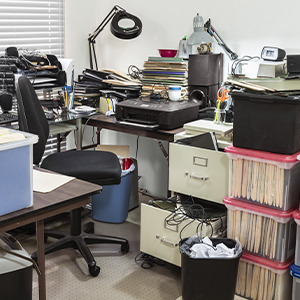If you find yourself working at home after years in an office surrounded by colleagues, the change can be big. Many people see working from home as liberating, flexible and good for concentration. Others can find the experience a shock to the system, from having no-one to talk with to family interruptions, or finding work home boundaries difficult to navigate. People succeed at home working when they make their conditions right for them.
Here are seven guidelines that will help your work from home experience succeed:

1. Create your workspace
Lounging on the sofa with a laptop may seem fun, but this won’t help you feel a difference between work and home life. Neither will it let you sit in a good posture for a healthy back and neck.
You need a dedicated workspace for your best productivity and wellbeing.
This should be in a room where you can work in peace away from family members or flatmates. If you don’t have a spare room, other options could be empty space under the stairs or the corner of a room.
You need somewhere to fit a desk, chair and monitor so that you can work comfortably.
2. Sit ergonomically
You may feel relaxed because you’re at home, but you need to review your seated posture. This is for the sake of your back, neck and upper limbs.
If you’re setting up your workspace for the first time it’s a good idea to do a workstation assessment to check you are sitting properly.
While the assessment will run through every aspect of your workspace, you need to adjust your chair so your thighs are parallel or slightly sloping to the floor, and you can support your back.
You also need to keep your forearms horizontal to the floor and elbows bent at 90 degrees, with your keyboard, mouse and work surface at elbow height.
The top of your screen should be parallel with your eyes or just below. You may need a monitor lift or laptop quick lift to help with this.


3. Don’t sit for long periods
It can be easy to lose track of time when you are working alone, but it’s vital that you get up and walk around every 20 minutes.
The perils of sitting for too long every day include weight gain, the risk of diabetes and muscle loss.
Set an alarm reminder to stand up regularly. By cutting the amount of time you sit, you can help to lower your blood pressure and reduce the risk of heart disease.
4. Let in natural light
You need to create a healthy working office at home, which includes lighting.
Natural light through a window is ideal, but if this isn’t possible, make sure you have enough artificial light to see your screen and documents easily.
Poor lighting can lead to eyestrain, migraine and headaches. Consider using a desk lamp or placing a floor lamp near to your workspace, if overhead light is inadequate.


5. Set your temperature
A big advantage of working from home is being able to adjust your house thermostat to the level you prefer.
Thermal comfort makes a difference to how comfortably we work, so make sure the temperature works for you.
6. Structure your day
A tricky aspect of working from home can be distractions, from family pets through to the laundry.
To make sure you get work done, regardless of other influences, structure your day as you would in the office. Create a to-do list and set goals to achieve before you stop for the day.
When you work from home you won’t always be able to prove hours worked, but you will be able to show performance by setting targets and hitting them.


7. Declutter
People who keep a streamlined home office report feeling less irritable, more productive, less distracted and able to process information better.
Organise your work files, magazines and other materials into labelled storage boxes and desk drawers, so that you can reduce clutter and find things quickly when you need them.

